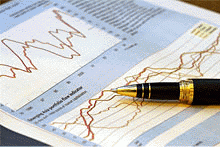

By Roger J Kerr
The two major currencies that have the dominant influence over the NZD/USD exchange rate movements day-to-day and week-to-week, the AUD and EUR, have now reached pivotal positions against the USD in global FX markets.
Both currencies have appreciated by over 15% against the USD in recent months, since the Greek sovereign debt crisis scared the markets back in May.
The question for the future direction of the Kiwi dollar from current levels of 0.7500 against the USD is whether the AUD and EUR can continue on their upward paths against the weak USD?
After the large gains to date it has to be recognised that the AUD is running into some resistance at the 1.0000 parity value against the USD.
Similarly, the Euro has run into something of a barrier at $1.4000 against the USD.
There appears to be a growing market viewpoint that all the USD selling on the currency markets in recent weeks, in anticipation of a truckload of more USD’s being printed and put into the system as part of the QE2 monetary stimulus from the Federal Reserve Bank, has already taken place. Therefore there still exists a reasonably strong possibility that the USD will be bought back on profit-taking once the Fed package is announced on November 3.
The future direction of the AUD/USD rate relies heavily on the movement of hard commodity prices, and therefore developments in China.
Commodity prices corrected marginally downwards last week when the Chinese central bank unexpectedly tightened monetary policy by increasing their regulated deposit and lending interest rates by 0.25%. The Chinese seem keen to avoid criticism at the November 11, G20 summit in Korea over their Yuan exchange rate policy.
The tightening of monetary policy internally shows that they are prepared to make policy adjustments, even if their Yuan currency policy is not what the West desires.
Any slowdown in the growth of the infrastructure spend in China (due to higher interest rates) is negative for raw materials demand, commodity prices and thus the AUD. Further monetary tightening in China over coming months has to be expected as they seek to control domestic inflationary pressures and hotspots in their property sector.
The Euro appears over-extended at $1.4000; however we have not seen any large scale profit-taking selling Euro, buying USD’s in the forex markets as yet.
The Japanese, Brits and Americans are all loosening monetary policy further in an attempt to stimulate their economies back on to positive growth paths.
In contrast, the Europeans do not yet see the need to reduce their interest rates further to boost consumer demand and spending.
European Governments are all conducting austerity measures to reduce spending and tighten fiscal policy. It would seem that the European Central Bank needs to run a very loose monetary policy for many years to off-set the tight fiscal situation. The ECB has shown no sign of reducing interest rates to date, however they may be forced to do so as inflation risks are really not there and growth flags.
A surprise cut in European interest rates before the end of the year cannot be ruled out and such a move would be negative for the Euro.
The German economy has improved this year on export performance assisted by the weaker Euro to $1.2000. European manufacturers will not be happy with a $1.4000 EUR/USD exchange rate making them less competitive, so expect pressure on the ECB to cut interest rates.
Against the global foreign exchange market backdrop of a weaker USD, the Kiwi dollar has under-performed the other major currencies. Lower cross-rates to the AUD and EUR confirm this movement.
Lower interest rates for much longer from the RBNZ contrasts to the moneymarkets pricing further increases in Australian interest rates. For the meantime, weak domestic economic data supports the RBNZ monetary stance. However, as the stronger export prices and performance feed through over coming months the RBNZ GDP growth forecast of 2.5% for 2011 will look increasingly like a major under-estimation of the New Zealand economy.
The combination of world currency changes and the timing of monetary policy changes here in New Zealand will drive the NZD/USD rate over the next 12 months.
A recovery in the USD value globally over coming months will pull the Kiwi back below 0.7000.
However, rising NZ interest rates by mid-2011 and a relatively stronger GDP growth performance than what most expect through 2011 has the potential to send the NZD/USD rate back up again to 0.7500/0.8000 over the second half of 2011. The only factor that could prevent NZD appreciation over the second half of 2011 would be increasing US interest rates as they remove their emergency stimulus with the US economy growing under its own steam again.
While the NZD/AUD cross-rate remains under downward pressure due to NZ short-term interest rates being unusually below Australia’s for a prolonged period, that situation is forecast to reverse next year and should send the NZD/AUD cross back to its long-term average of 0.8500.
--------------------
* Roger J Kerr runs Asia Pacific Risk Management. He specialises in fixed interest securities and is a commentator on economics and markets. More commentary and useful information on fixed interest investing can be found at rogeradvice.com
No chart with that title exists.
1 Comments
Or will the US$ keep getting into trouble over this;
http://www.nytimes.com/2010/10/26/business/26tarp.html?_r=1
http://finance.yahoo.com/news/Dollar-at-Risk-of-Becoming-cnbc-419253052… http://www.cnbc.com/id/39827922
We welcome your comments below. If you are not already registered, please register to comment.
Remember we welcome robust, respectful and insightful debate. We don't welcome abusive or defamatory comments and will de-register those repeatedly making such comments. Our current comment policy is here.